
If you are a foodie and want light, Asian dishes, then Chinese and Japanese cuisines will be the ultimate fit for you.
Ramen is a Japanese dish consisting of a noodle soup that’s made with wheat noodles, broth, and bits of meat, along with soy sauce seasoning on the top.
It’s arguably one of Japan’s best gifts to the world and has become popular worldwide. Ramen in its simplest form is also a very cheap dish to make.
Okay, we may have over-simplified it a little because there are many variations of ramen ranging from a basic broth with egg noodles to slices of tender pork, delicate boiled eggs, and nori.
Different regions of Japan have their own unique versions of ramen, and innovative chefs are always producing new takes on the dish.
We’ll give you a few examples here, so you get the idea. The names are based on the flavoring ingredients.
- Shio Ramen – seasoned primarily with salt, this yellow-tinged ramen is usually a mixture of chicken, vegetables, and seaweed. The best noodles for this one are straight ones.
- Miso Ramen – the primary seasoning here is miso which gives the broth a sweetish, nutty flavor. The noodles of choice here would be a thick, curled, chewy variety.
- Shoyu Ramen – delicious, salty soy sauce flavors this ramen and gives it a brownish hue. The best noodles here are the curly ones.
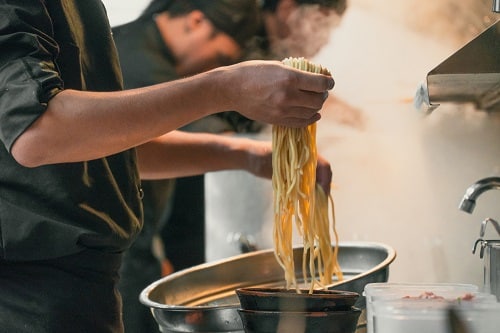
There are many more types, but this should get you started. When ramen is well made, the flavors are rich and complex. This cannot be achieved with a packet of flavoring spice but begins with a gently, long-simmered stock.
Ramen is similar to pho from Vietnam, but pho uses beef, not pork, and lighter broth with rice noodles.
Making good ramen not only depends on having a beautifully complex stock but also on the right noodles. If you are looking for the best noodles for making your own ramen at home, we have outlined some options for you!
Best Noodles for Ramen
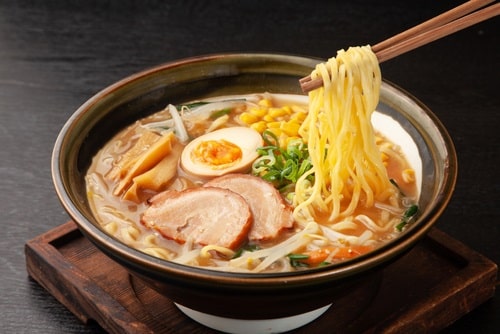
Traditional ramen noodles are made from wheat flour, water, and kansui, also known as lye water. This alkaline water solution is what makes ramen noodles, well, ramen noodles.
It makes them slippery and glossy. It also gives them a very distinctive flavor and slightly yellow color unmatched by any other kind of noodle.
They are sold in different shapes and lengths, just like Italian pasta is. Sometimes the kansui is replaced with eggs, so check the labels if you’re vegan or have an egg allergy.
Without further ado, here are 7 of the best noodles to use for ramen.
1. Egg Noodles
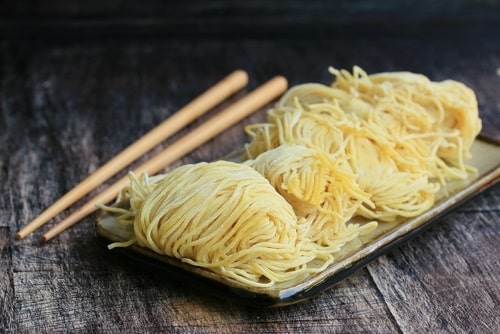
Egg noodles are pretty similar to conventional pasta, which is made with eggs and wheat flour. When it comes to egg noodles, there are two types.
Firstly, there are dried German noodles that are short in length and have a corkscrew shape. These, while not authentic, work well for ramen.
Secondly, there are Chinese egg noodles that have a long, thin shape. These noodles are available in dried and fresh form and are perfect for use in soups and specifically ramen.
2. Wheat Udon Noodles
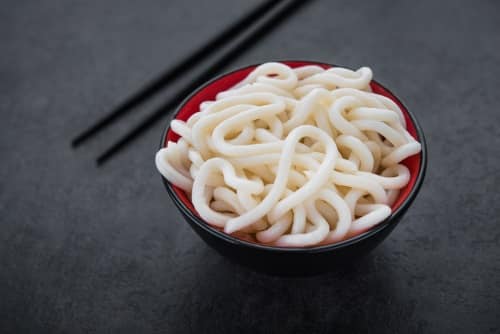
Udon is a type of Japanese noodle also made from wheat flour. These are thick, white, and a little slippery. In fact, they are the thickest type of Japanese noodle.
Interestingly, they used to be made by someone treading all over the fresh dough! Udon is available dried, fresh, or frozen. They are normally served hot in soup and sometimes eaten chilled in summer accompanied by a dipping sauce.
Udon has a mild flavor and a soft texture. They are a good option for vegans as they contain no eggs. Make simple ramen with a chicken broth flavored with mirin and soy sauce. Add the udon and top with snipped scallions. Yum!
3. Soba Noodles
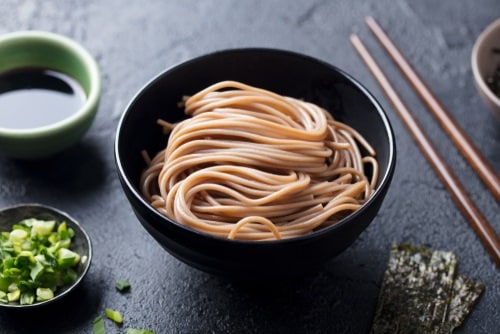
Soba noodles are perfect for making ramen, and they are usually available in their dried form. These noodles have a flat, thin shape and are made from buckwheat flour.
This ingredient provides a nutty, fairly strong flavor and a brownish color. They work well in more strongly flavored ramen containing soy sauce.
4. Wheat Ramen Noodles
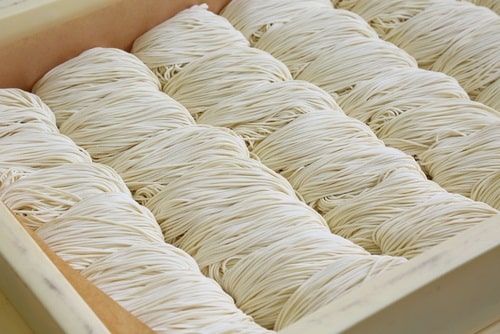
These noodles are extremely light that have become popular for their springy form. These ramen noodles are made with wheat flour, eggs, and alkalized water in the traditional way.
These noodles have an elastic texture that’s great for “slurping” because they are made with a high gluten flour, giving them a higher protein count than normal noodles.
5. Rice Vermicelli Noodles
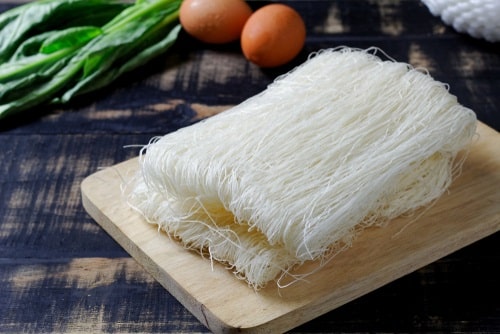
Rice noodles are made out of rice flour instead of wheat flour and are available in dried and fresh variants.
Rice vermicelli noodles have the same thickness as angel hair pasta but with a wider cut when it comes to the shape. These noodles are a great choice for those with gluten allergies.
6. Somen
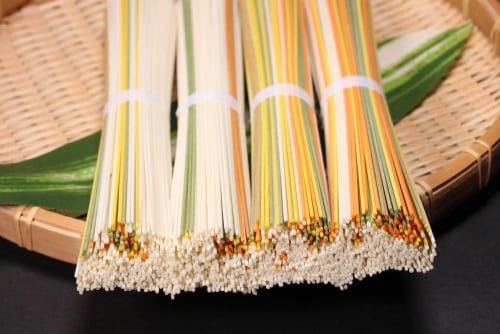
These noodles are extremely thin and white because they are made with wheat flour. This thin configuration ensures that the noodles are cooked within one minute (even less, only thirty seconds!).
These noodles can be used in ramen or served with a dipping sauce. Somen noodles are made by being stretched out with the help of vegetable oil to get them really thin before being dried.
7. Shirataki
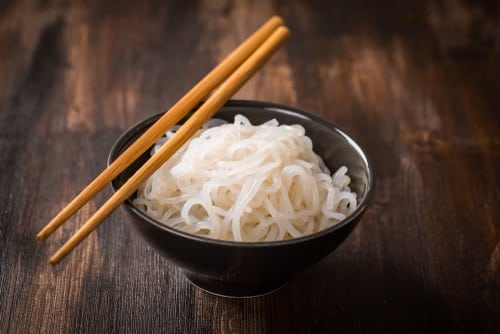
These noodles are for everyone who needs a low-calorie count, no gluten, and low carbs. They are sometimes called “miracle noodles” because they are very filling yet have few calories.
These noodles have a slippery texture and a white color. The noodles are made from the konjac plant, rich in soluble fiber, making them easily digested. They are available fresh in refrigerated form, and all you need to do is boil them and add them to the ramen or broth.
We hope you have enjoyed reading about the different types of noodles that are available for your ramen. We’d love to know which ones you try. Talk to us in the comment section below!